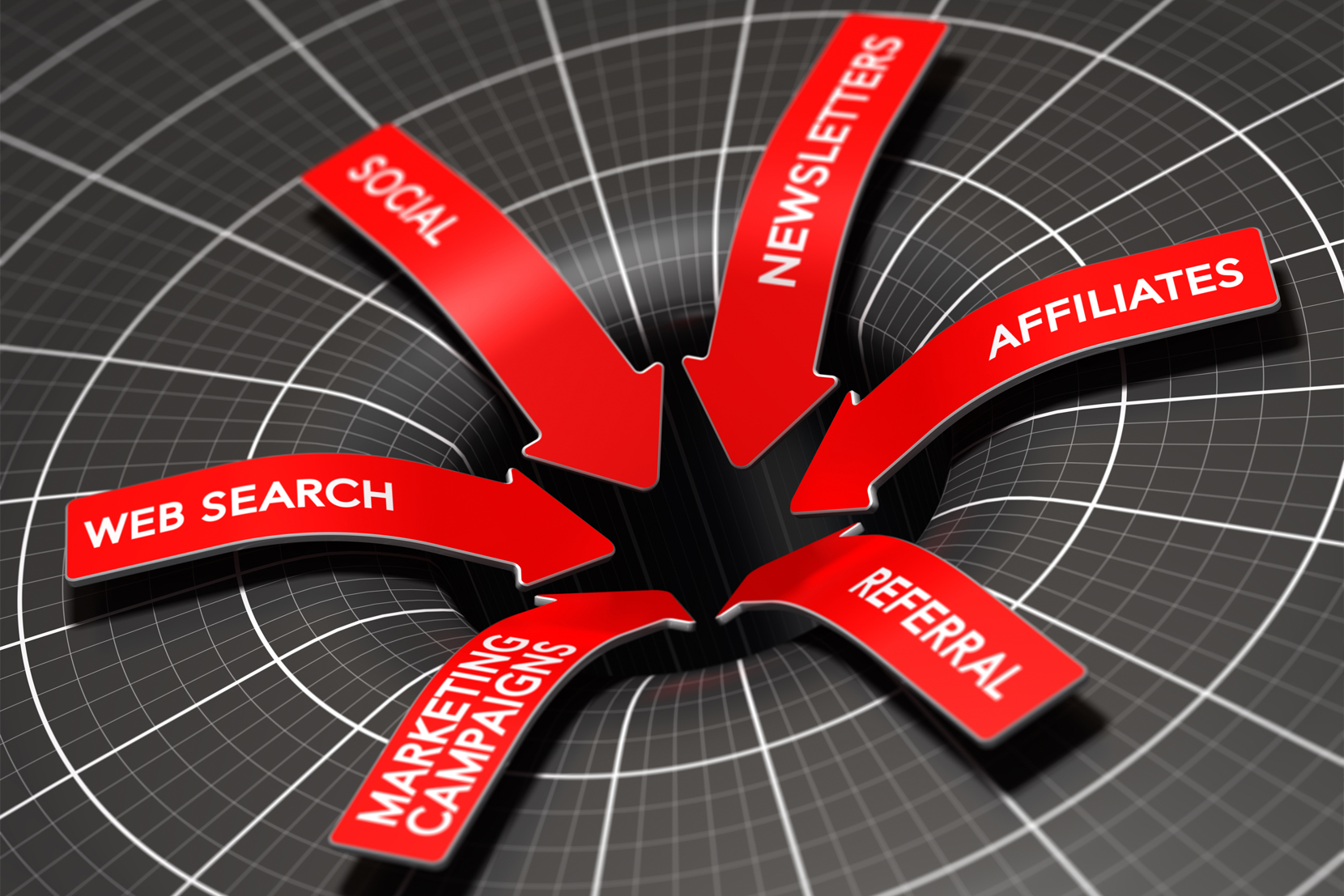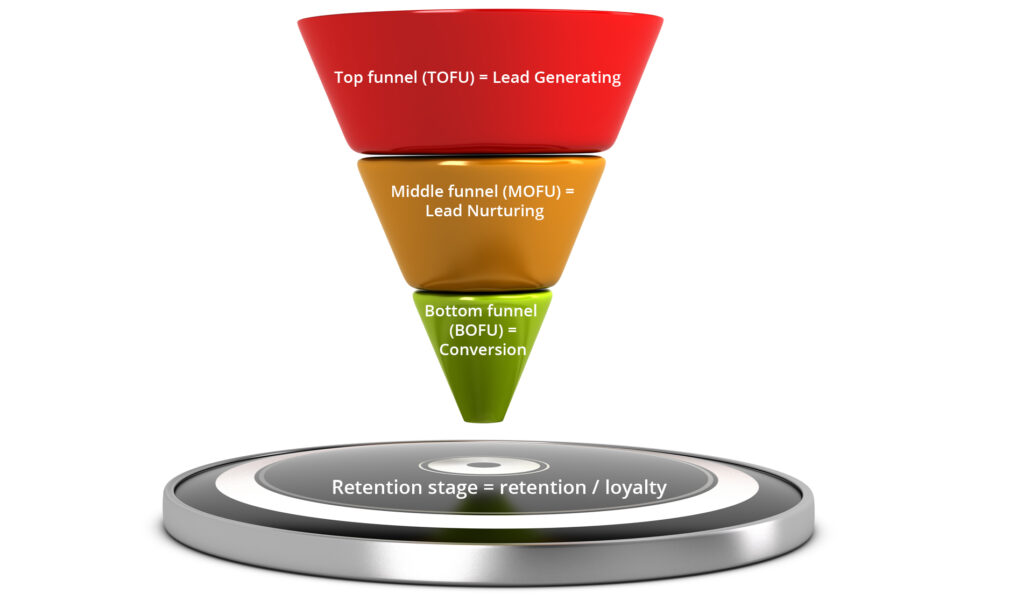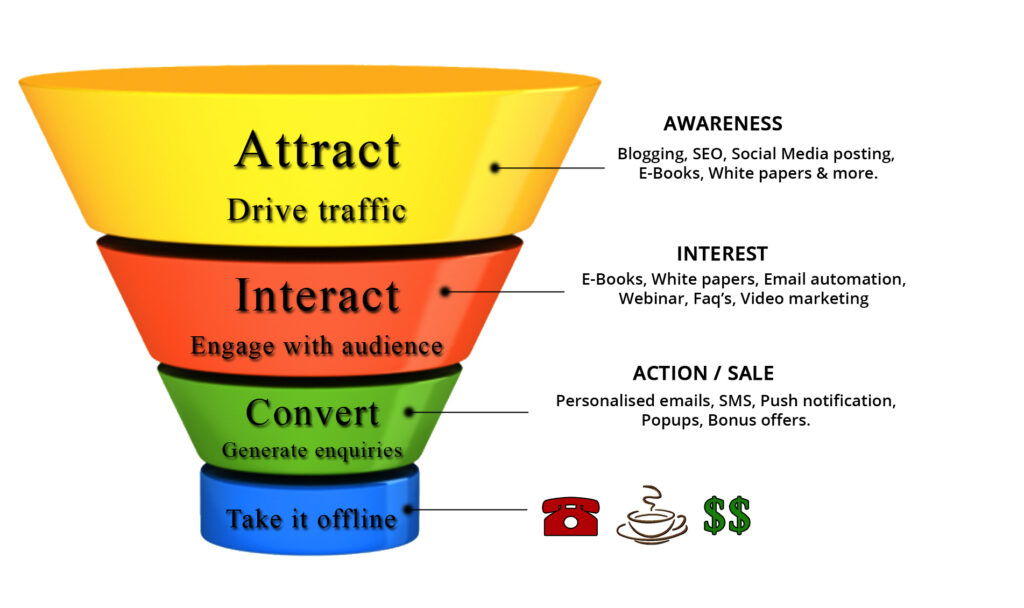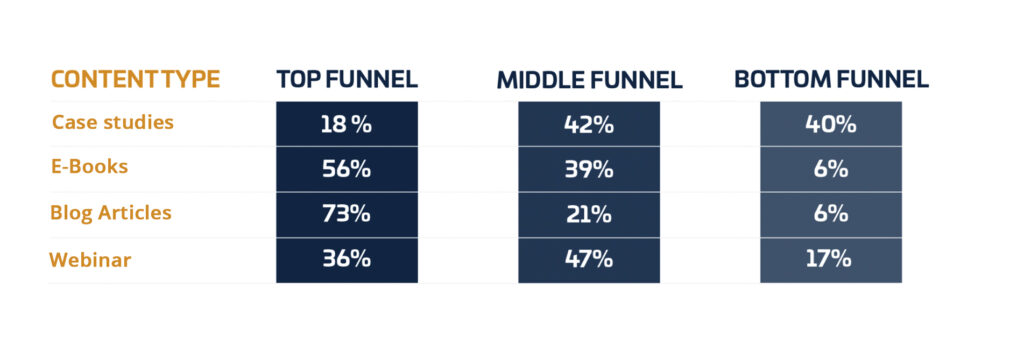
Marketing funnel – What is it and how can you use it
Marketing funnel: What is it and how can you use it?
Do you have control over how your customers actually become customers? And does your marketing hit the right places in your customers’ journey?
It can be difficult to hit your specific target audience if you do not have a concrete structure on your marketing.
The key to good lead generation lies in an effective marketing tunnel. Your marketing tunnel can be the tool you need to create structure for all your marketing efforts.
In this post I will make you wiser on what a marketing tunnel is, why it is so important to have control of the different stages and how you can make your own marketing funnel. I will primarily address content marketing , but you can use your marketing funnel in all parts of your marketing.

What is marketing funnel?
A marketing funnel can help you divide your customer journey into different stages. So this is the process that lies in the customers’ journey from their very first interaction with your company to being a paying customer.
Funnel is really just the English word for funnel, and it’s also the way you should see your customers’ journey. A funnel where you fill the top with new traffic, which then comes out as a lead at the other end of the funnel and meets your goals.
There could be goals such as:
- newsletter subscriptions
- meeting bookings
- online transactions
- catalog orders etc.
The process through the funnel can consist of a sea of different channels and platforms, including content marketing, paid ads, email marketing, SEO and much more – depending on where in the customer journey you need to capture your customers and what you want to focus on.
A marketing funnel is thus a way of structuring your inbound marketing . And what does that mean then, you probably think. Inbound marketing simply means that you attract potential customers with value-creating and relevant quality content. Marketing funnel is a method of getting this content out at the right times in the customer journey and in just the right way.
Why should you work with marketing funnel?
You can quickly get shot in the east and west with your marketing efforts if you do not know where to get the best result. With a marketing funnel, you can plan your marketing strategies and target them precisely to the potential customers at the stage they are in.
In short: Your bets are placed exactly where they are most effective, and you get the most out of your money.
“Our challenge is that we have an extremely niche and complex product and a target group that is difficult to define. Getting everything together to work in a digital context, and also globally, is therefore a bit tricky. ” – Director Global Sales at a leading international manufacturing company
The different stages of your marketing funnel
The marketing funnel model is typically built up after three or four stages – depending on what you count. There are a sea of designations for the different stages and ways of building the funnel, but the principle is the same. Common to all the funnel models is that each stage represents places in the customer journey and can be used as a guideline for which marketing initiatives you should use and when they should be used.
I start here with a marketing funnel model that has three main stages and a subsequent stage that you need when your customers have been all the way through the funnel:
Let’s break up the different stages and dive into them each:
1. Top funnel (TOFU) = problem / awareness
First thing first: Get the right people to notice your brand. At this stage, you need to hit the people who have never seen or experienced your brand before. You can do this through everything that draws potential customers to your website, including SEO, blog posts, paid ads or social media.
A good tip is to clarify the customer’s problem. Because why buy into a solution at all if you do not know the problem? Find out what your customers’ pains are and use them in your top funnel content.
Here you need to focus on attention and not action. Keep in mind that your leads are not hot yet, so beware of too many call-to-actions and sales talks. Make sure to create a budding interest in your brand and the item you are selling.
How to hit top funnel:
- Focus on the problem for the customer.
- Save CTAs and sales speeches for further down the funnel.
- Keep it general, but be value-creating and informative.
- Let customers open their eyes to you and their own needs.
Top funnel marketing is basically about lead generation and about making you and your product visible to the customer.
2. Middle funnel (MOFU) = information search / desire
Now know your leads for their needs and know that they need a specific product or service. This leads them on to the research phase, where they search for even more information. So the people here have seen your brand, but are not ready to buy yet. Many people underestimate this stage, but finally you must not – this is where you can really mature your leads. Now you need to link the previous attention along with getting the user into your website.
Customers are spending more and more time researching their purchase before buying it. You need to take advantage of that. Therefore, it is super important that you create value for your target audience with relevant and informative content. You need to convince your potential customers that your product is better than the other alternatives out there.
Trust is the winning word in this second stage. It’s about building trust with the customer so that they choose you over the others. Trust and credibility are important elements in a shopping journey, and this is where you need to stand out.
To hit the middle funnel:
- Focus on a more detailed message.
- Turn up the value-adding part of your solutions.
- Use customer cases to support your USPs.
- Use email marketing to dive into the needs of your customers.
- Target your content to custom segments.
Middle funnel is very much about lead nurturing, where you create trust in your leads and make them regular followers of your brand.
3. Bottom funnel (BOFU) = buy / action
Now your steaks are getting tender. In the bottom funnel, the focus must be on getting the traffic converted to leads and customers. Now they have opened their eyes to your brand and products, researched the market for alternatives and have become convinced that you are the winner. Customers know about you. They have googled you and maybe even visited your website. It’s now time for you to strike.
To hit the bottom funnel:
- The livestock must be very specified for your products or services.
- Use clear CTAs.
- Remove the remaining doubts from the potential customers.
- Create high credibility.
- Last but not least: Make it easy to buy.
In the bottom funnel, your clear focus must therefore be on sales and conversion. Win them over!
4. Retention stage = retention / loyalty
The last stage as such is not part of the broad part of the funnel, but that does not make it any less important. It is also a stage that is often underestimated. However, it has no reason to be, because here you can create retention, increase loyalty, create additional sales and upselling.
It is important that you do not just let go of your customers after they buy. Keep them in the loop and hold them so they buy from you again. Here you can, among other things, use e-mail marketing as a platform and retain your customers with win-back flows and the like.

How to make a marketing funnel for your content
Now we have gone through the different stages, but how do you use it in practice? Yes, you use your newly acquired knowledge of the different stages to select content types and channels that match your customers’ journey.
1. Understand your target audience.
Before you get that far, you need to understand your target audience. It is near impossible to make a marketing funnel if you do not know who your audience is. You need to know not only who your target audience is but also how they interact with your website. The online customer journey will help you shape your marketing funnel.
2. Determine the different stages in your funnel.
The next step is to find out what stages should be in your digital marketing funnel. The three stages (top, middle and bottom) are essential, but you can easily expand them and adapt them to suit your company and target group.
Add content types to each stage.
The last step is to tailor your content marketing to your funnel.

What type of content is most effective at what stages?
In the graphic above, we see that it is obvious to use blog posts and e-books in the top funnel stage, whereas customer cases are obvious to use in both the middle and bottom funnel stage. However, all customer journeys are different.
Just look at the difference between B2B and B2C. The buying journey of B2B is often longer and more complex. This means that your customers are longer in the initial stages, while customers are typically somewhat shorter in getting through the funnel by B2C. You must therefore make sure to find the content types that best match your customer journey.
The different content types are related to different channels and platforms, which you must also include in the equation. Of course, if you want to keep track of newsletters and automations, it has to be done on an email platform, but you also need to consider how your blog posts and e-books should hit your audience.
Should it be through SEO on your website or as gated content in paid ads? There is a sea of possibilities.
It is therefore important to find the funnel structure that best matches your customers’ shopping journey and your brand. Get started!


